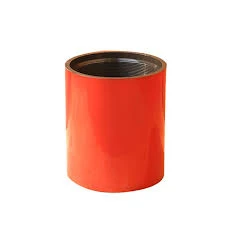- Afrikaans
- Albanian
- Amharic
- Arabic
- Armenian
- Azerbaijani
- Basque
- Belarusian
- Bengali
- Bosnian
- Bulgarian
- Catalan
- Cebuano
- Corsican
- Croatian
- Czech
- Danish
- Dutch
- English
- Esperanto
- Estonian
- Finnish
- French
- Frisian
- Galician
- Georgian
- German
- Greek
- Gujarati
- Haitian Creole
- hausa
- hawaiian
- Hebrew
- Hindi
- Miao
- Hungarian
- Icelandic
- igbo
- Indonesian
- irish
- Italian
- Japanese
- Javanese
- Kannada
- kazakh
- Khmer
- Rwandese
- Korean
- Kurdish
- Kyrgyz
- Lao
- Latin
- Latvian
- Lithuanian
- Luxembourgish
- Macedonian
- Malgashi
- Malay
- Malayalam
- Maltese
- Maori
- Marathi
- Mongolian
- Myanmar
- Nepali
- Norwegian
- Norwegian
- Occitan
- Pashto
- Persian
- Polish
- Portuguese
- Punjabi
- Romanian
- Russian
- Samoan
- Scottish Gaelic
- Serbian
- Sesotho
- Shona
- Sindhi
- Sinhala
- Slovak
- Slovenian
- Somali
- Spanish
- Sundanese
- Swahili
- Swedish
- Tagalog
- Tajik
- Tamil
- Tatar
- Telugu
- Thai
- Turkish
- Turkmen
- Ukrainian
- Urdu
- Uighur
- Uzbek
- Vietnamese
- Welsh
- Bantu
- Yiddish
- Yoruba
- Zulu
api 5ct casing coupling
Understanding API 5CT Casing Couplings
In the oil and gas industry, the extraction of resources from the earth involves complex technologies and sophisticated equipment. One of the key components in drilling operations is casing, which provides structural integrity to the borehole and isolates specific geological formations. Among the various standards that govern the manufacturing and application of casing, API 5CT is one of the most crucial. This article delves into the significance of API 5CT casing couplings, their specifications, and their role in ensuring safe and efficient drilling practices.
What is API 5CT?
The American Petroleum Institute (API) is an authoritative body that establishes standardized practices and specifications for the oil and natural gas industry. API 5CT specifically outlines the requirements for casing and tubing used in drilling, providing a comprehensive framework for ensuring quality and safety. Casing pipes are designed to withstand high pressures and are subject to various environmental conditions, making it imperative that they adhere to stringent standards.
The Importance of Casing Couplings
Casing couplings are crucial components used to connect individual sections of casing pipes. They provide the means to assemble long strings of casing required to reach deep reservoirs. Apart from keeping the casing sections together, couplings play an essential role in maintaining the integrity of the entire casing structure. Inadequate or poorly designed couplings can lead to catastrophic failures, posing risks to both the drilling operation and the environment.
Specifications of API 5CT Casing Couplings
Under the API 5CT standard, casing couplings are manufactured from high-quality steel and must meet specific mechanical requirements, including yield strength, tensile strength, and impact toughness. The materials used are often alloy steels that can withstand the harsh conditions encountered during drilling operations, such as high pressure, temperature fluctuations, and corrosive environments.
Casing couplings are categorized into different types based on their design
api 5ct casing coupling

1. Regular Couplings These typically have a plain end and do not provide additional features like internal threading. 2. Threaded Couplings Designed to facilitate easier connections between casing sections, these couplings have external threads that match the internal threads of the casing pipes. 3. Special Couplings These may include additional features such as anti-corrosion coatings or modifications for enhanced pressure performance.
Each coupling type serves a specific purpose and is selected based on the particular attributes of the drilling project.
Quality Control and Testing
API 5CT establishes rigorous testing and quality control protocols for casing couplings to ensure their safety and reliability. This involves a series of tests including but not limited to tensile tests, impact tests, and non-destructive testing methods like ultrasonic examinations. Manufacturers must adhere to these protocols and frequently undergo audits by third-party agencies to validate compliance with API standards.
Applications in the Field
Casing couplings find application in various drilling scenarios, from conventional oil and gas extraction to more advanced techniques like hydraulic fracturing and horizontal drilling. Their role becomes even more critical in deep-water drilling and extreme environments where conventional materials may fail. Proper application of API 5CT couplings ensures that operators maintain the integrity of the drilling assembly, which is essential for successful resource extraction.
Conclusion
API 5CT casing couplings are fundamental components in the oil and gas drilling industry, ensuring the structural integrity and safety of drilling operations. As the demand for energy resources continues to grow, adherence to the API standards is vital for the sustainability of extraction practices. By utilizing high-quality, reliable couplings, operators can minimize risks, optimize drilling efficiency, and contribute to responsible resource management. Understanding the specifications and applications of API 5CT casing couplings helps stakeholders make informed decisions, ultimately leading to more successful drilling outcomes. Whether it's in offshore platforms or onshore rigs, the importance of these couplings cannot be overstated, making them a cornerstone of modern drilling technology.
-
Tubing Pup Joints: Essential Components for Oil and Gas OperationsNewsJul.10,2025
-
Pup Joints: Essential Components for Reliable Drilling OperationsNewsJul.10,2025
-
Pipe Couplings: Connecting Your World EfficientlyNewsJul.10,2025
-
Mastering Oilfield Operations with Quality Tubing and CasingNewsJul.10,2025
-
High-Quality Casing Couplings for Every NeedNewsJul.10,2025
-
Boost Your Drilling Efficiency with Premium Crossover Tools & Seating NipplesNewsJul.10,2025







